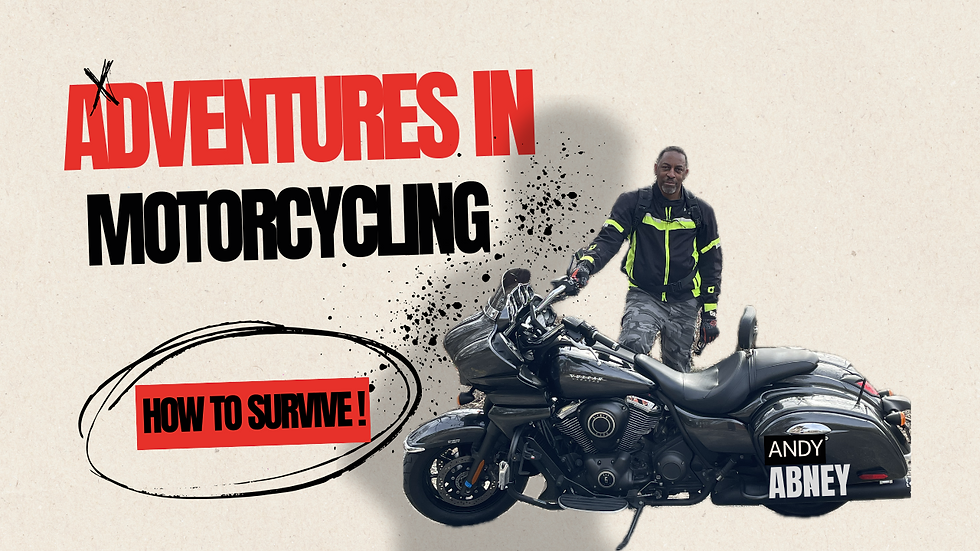Understanding accidents and why they happen.
- NMR

- Apr 30, 2022
- 2 min read
There are three main causes of accidents and how you can avoid them.

You hear a lot about motorcycle accidents but not enough about the true reasons that caused them. We are going to break the accidents down into three categories and explain the differences and how you can avoid them.
First let's talk about the drop. Legally it's called an accident but technically it isn't unless it has a high damage amount. The drop can happen regardless of your experience level. Drops usually occur more with newer riders just starting out. They usually consist of very little damage to the motorcycle and none to low injuries to the rider. Causes could be sand or gravel, miscalculating your footing, trying to handle a motorcycle that is too heavy or too tall for you, stabbing the front brake, negotiating a turn too slow and a number of minor causes. You see a lot of this from inexperience to coming up on a situation too quickly and not being able to properly react in time.
Now let's talk about the crashes. Crashes are different than accidents because they involve rider recklessness, carelessness and or error. You hear a lot of these classified as accident but they were avoidable. We stress training and obeying the law because you can avoid these accidents. Example: If you're driving 50 mph on a curvy road that is posted as a 25 mph zone and a car pulls out of a driveway and you hit it, it's your fault. Some are asking why. The street engineers have already calculated the maximum speed under perfect conditions that you could operate your vehicle and be able to stop in an emergency. If you're traveling twice the speed limit that will greatly cut down your reaction and stopping time. You have the control over this.
Third is the collision. In collisions your not responsible for the accident happening but it doesn't mean you couldn't have done more to prevent it. Sometimes you're just in the wrong place at the wrong time. This is where lane positioning, checking your mirrors, listening for sounds and predicting a situation. Example: You're sitting behind a car at a traffic light when you hear a car coming up behind you quickly. If you're off to the right side behind the car in front you may be able to move to the right side of the car in front of you before the car behind you can rear end you. The more you know and apply to your everyday riding the safer you are.
Well we hope this gives everyone some clarity about accidents and why motorcycling isn't as dangerous as some people think it is. Have fun, be safe and don't forget to join New Motorcycle Riders, www.newmotorcycleriders.com, so that you can be notified of the latest videos and articles that we share.








Comments